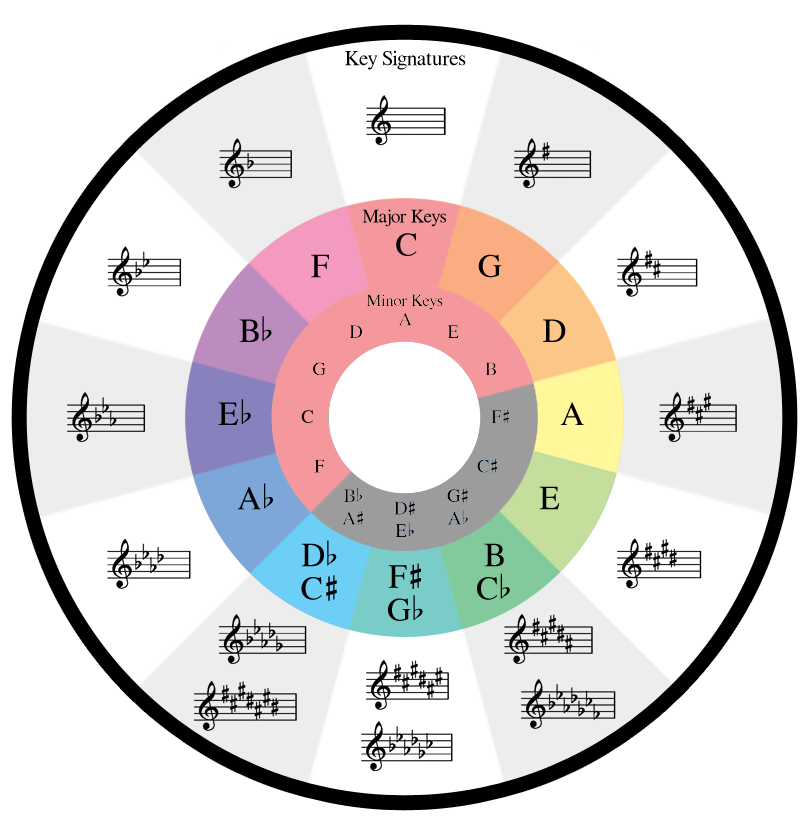The term “scale” comes from the Latin scale meaning “stairs” or “ladder”. Scales in their basic forms comprise different members of the pitch-class collection in order and each member of the scale – a scale degree or scale step – is a rung on this ladder.

Chromatic and Diatonic Scales
Chromatic Scales include all twelve of the pitch-classes, while Diatonic Scales include seven different pitch-classes. Major and Minor Scales are considered Diatonic Sales.

Chromatic scales are built using a simple formula of H-H-H-H-H-H-H-H-H-H-H-H, where H indicates that there is a half step or an interval of a minor 2nd between each note. Normally, Chromatic Scales can start on any pitch and they use sharps when ascending and flats when descending.

Similarly, Major Scales also start on any pitch but they include seven note names using flats and sharps to ensure that all of the pitches remain in the key. The pattern for Major Scales is W-W-H-W-W-W-H, where W indicates an interval of a whole step or a Major 2nd, and H represents a half step or a minor 2nd.

This pattern is also represented as two Major Tetrachords a whole step apart – [W-W-H] + [W] + [W-W-H].
Key Signatures
Key signatures are short-hand notation to indicate which accidentals we are using to remain in a key at the beginning of each line of a score right after the clef and when the key changes. This saves the pain of having to write every individual accidental EVERY TIME it appears on a score. The key signature works along with the pitch collection and the relationships between theses notes to tell us which “key” a piece is in.
Flats and sharps can not be listed in any random order, they are written the same way every time.

Flats – b’s
- F
- Bb
- Eb
- Ab
- Db
- Gb
- Cb
Sharps – #’s
- G
- D
- A
- E
- B
- F#
- C#
Circle of Fifths

Scale Degree Names
Tonic
Supertonic
Mediant
Subdominant
Dominant
Submediant
Leading Tone
Example of Scales in Arrangements
Scales appear in music frequently in part or as a whole, ascending, descending and in intervals. The following excerpt demonstrates scales being used as passages in an arrangement. Enjoy!
